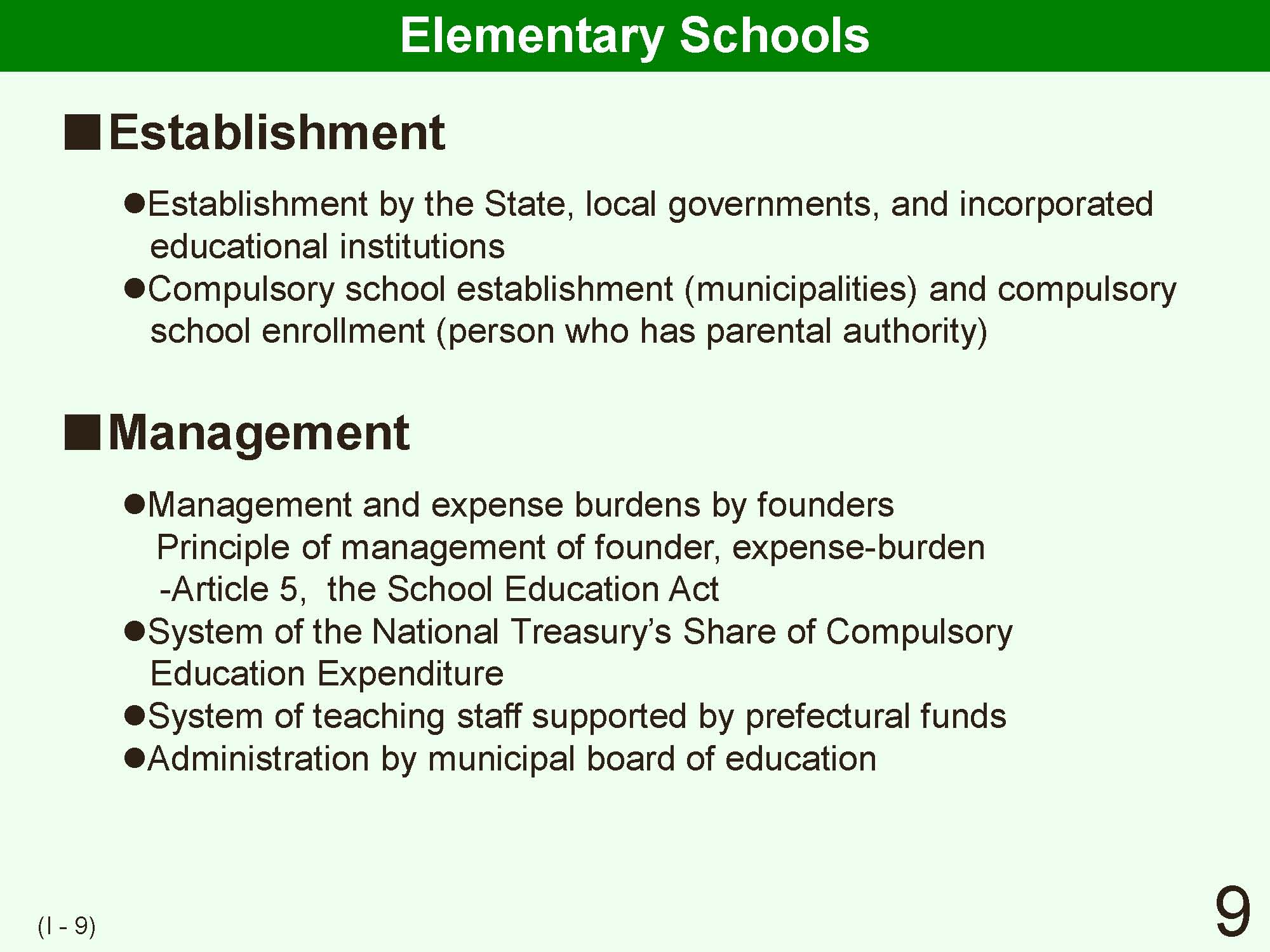| 9 | gI Outline of Japanese School Systemh | Previous | Next | JAPANESE |
|---|---|---|---|---|
 |
||||
| Elementary schools established in Japan under the compulsory education system aim to provide general basic education. The State, local governments and incorporated educational institutions have the right to establish such schools. Most elementary schools have been established by local governments except for schools attached to national universities and private schools. Under the system of especial zone for structural reform,f stock corporations will also be permitted to establish elementary schools.
According to the School Education Law, the management of educational expenses is left to the founders of schools. However, in the compulsory education schools, authority and responsibility are shared between the State and the prefectures as higher order governments in order to both ensure common approaches to nation building as well as to maintain and improve educational standards. (School law/VI-6) The curriculums of the elementary schools are based on the Course of Study and consist of the following subjects (Japanese Language, Social Studies, Arithmetic, Science, Life Skills, Music, Drawing and Handcraft, Home Economics, Physical Education), Moral Education (/IV-44~48), Special Activities (/IV-49~63) and the Period of Integrated Study (/IV-64~68). With the revised Course of Study in 2002, teaching of English during the Period of Integrated Study was approved With the provision of greater leeway for local school discretion, ecreation of special curricular-oriented schoolsf is being promoted. |
||||
Please send your comments and concerns here
kamada@criced.tsukuba.ac.jp
Center for Research on International Cooperation in Educational Development(CRICED) University of Tsukuba
1-1-1, Tennodai, Tsukuba-shi, IBARAKI
305-857, JAPAN